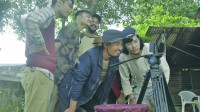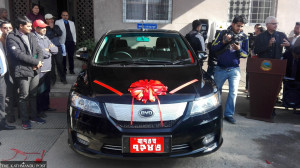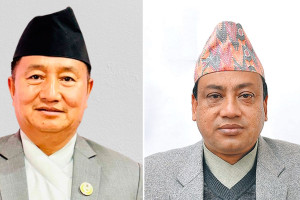Entertainment
The art of arranging
Gopal Rasaily is easily one of the most sought-after music arrangers in Nepal today, having worked on creating tracks for popular singers in the industry here for over a decade now
Nhooja Tuladhar
Rasaily had been playing guitar for about 10 years when he decided to try his hand at the art of music arrangement. Before this, he was playing with live bands in hotels and was also working as a session guitarist. “I had been practicing a lot of guitar then and listening to a lot of music. From gypsy jazz to world music, I was into everything. I think the listening habit has paid off for me as an arranger now,” says Rasaily, who is one of the most sought-after music arrangers in the industry today. “An album titled Prarambha, that also debuted young artists like Prashna Shakya and Sailesh Singh, was the first record that I had worked on and I’ve been working on creating tracks for singers ever since. It’s been about 13 years now.”
Rasaily says there are a lot of misconceptions regarding the track-making process in Nepal. “So many singers come in thinking that all they need to do is give their vocal performances and the arranger will take care of the rest,” he says. But the recording process is not that simple. First of all, the lyrics have to be tuned into a song. This can be done by a separate lyricist and a composer, a band, or just an independent song-writing artist. Then, a demo of the vocals has to be recorded by the vocalist of the band or a singer chosen to sing it. The rough record is then given to an audio arranger to work on. “It’s very important for an arranger to listen to a rough take carefully and decide what kind of music will best suit the words and the composition. A very adhunik track for a pop composition will fail. An arranger needs to listen to a lot of different kinds of music. Versatility is integral,” says Rasaily. After the arranger decides how he wants to mould the song, the instrumentation of the track begins. In Rasaily’s case, he starts off by creating a suitable drum beat, which is followed by a chord progression set and then he adds a bass line. After that, in order to give character to the song, he starts adding sustained as well as melodic leads to the track and then tops it off with some strings to brighten up the tune. Of course, this is a very basic structure and differs according to the composition and lyrics of a given song. Different arrangers have varied approaches, but Rasaily likes to make use of a midi keyboard that employs sample sounds in order to simulate different instrument timbres and record it onto the computer hard drive via a Digital Audio workstation.
The track is then sent to a recording studio so that the singer can add vocals. The use of some digital instruments do not sound grand, so live retakes are also undertaken whilst in the studio. The song is then mixed and mastered before it is complete.
“I use a lot of samples for arranging these days. They are high quality and sound great, but things weren’t always this easy,” says Rasaily, who had made use of the Yamaha QY700 sequencer when he started out with arranging. The 90s gadget was benchmark technology at the time, but now it seems quite limited compared to the sounds and tweaking options software DAWs provide. “The older records I worked on sound stale to me when I listen to them now; technology has evolved so much. I think, eventually, in the near future, all we’ll have to do is type in the lyrics, declare the scale at which you want the song to be, declare the kind of voice you want the song to be sung in—there could be presets like Bryan Adams and Celine Dion—and the computer renders the song for you.”
Rasaily, who is also the in-house arranger at the Do Re Mi studio, says that when he first started learning music, he couldn’t even afford a guitar worth Rs 500, but now he has a modest collection. “People say music isn’t very commercially viable, but I think they are wrong. It’s about working hard on what you love doing and not thinking of it as an investment that has to pay off eventually,” he says.
As for his advice to up-and-coming arrangers in the business, Rasaily says it’s important to be well-versed in an instrument. “It could be the tabala or the keyboard, but I think serious dedication towards an instrument is required. Budding arrangers limiting themselves to sampling loops off of the Internet should pick up an instrument and start learning.”




 26.21°C Kathmandu
26.21°C Kathmandu












